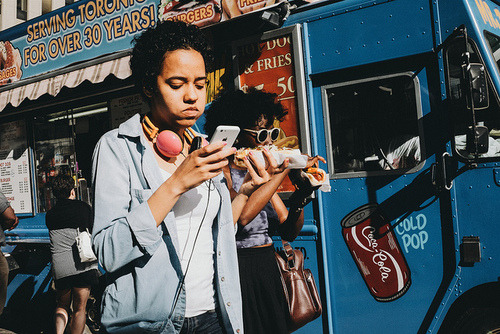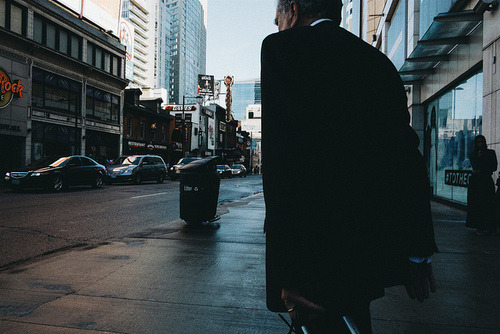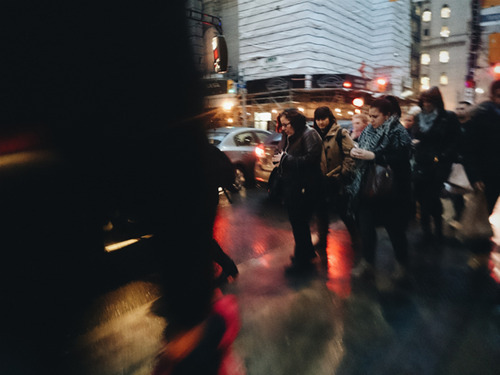What Mobile Photography Means To Me: The Mobile Photo Now Exhibit
Tonight (Feb 5th), as in right this moment, marks the opening for the “Mobile Photo Now” exhibit in Columbus Ohio and though I can’t be there in person, I figure that blogging about it is the next best thing… (kinda..:). It does give me the opportunity to finally get another blog post up, and discuss exactly what mobile photography means to me and how it’s played a part in changing the way we perceive photography in this age.

*Image credit Mitchell Seckman from the ColumbusMuseum.org website
A few months ago there was a contest held on the @joshjohnson instagram feed in collaboration with the Columbus Museum of Art to launch the largest mobile photo exhibit to date. The purpose was to “highlight the emerging art form of mobile photography and the power of social media and smart phones as a means of creative expression.” People could hashtag their images according to the daily theme to be eligible. For images to be considered, one had to register on the Museum’s website and give a brief description as to what their ‘story’ was in relation to the photos they were submitting; the only technical requirement was that images be either shot or edited on a mobile device.
The key word here is ‘or’.
That’s right, those who shot with regular cameras could submit images as long as in some way, they were edited on a mobile device. Of course this sparked a lot of debate over whether this would still be considered a ‘mobile challenge’. To me, I chose to play the devil’s advocate and say "yeah, why not?” I believe that mobile photography describes not just the medium in which an image has been taken but also the vessel in which the message is delivered.

Mobile photography to me is photography that can reach the masses using mobile devices. It’s as much the sharing (if not more so) as it is the creating.
Of course I wanted to take part in this as well for the simple reason that I just wanted to share my artwork (but let’s be honest, how cool would it be to have your stuff in a museum, right?) So as soon as I found out that my work would be eligible because my images were edited on my tablet or on my phone I submitted a few from both my @phraction and @phraction_street accounts. None of them were featured on the @joshjohnson feed unfortunately. I figured that I didn’t make the cut in the ‘street photography’ category and many others didn’t either, which sparked a discussion about how those who were being selected may have been using a DSLR and had an unfair advantage when it came to the selection process due to the quality of the images. Knowing that a good photo is a good photo regardless of the tool you use to make it, I decided to share my two cents on the topic of the competition being open to those who didn’t necessarily use their mobile devices to capture the images for the challenges. You can find that discussion here or here.
If you don’t feel like reading through that format or if the links don’t work because I don’t know how to internet, here’s a excerpt of what I wrote:
“To me the concept of mobile photography shouldn’t be solely based on how an image was created but inclusive of the vessel in how it is shared and means of its distribution.
I agree that if this campaign was called a smartphone challenge and other cameras were used (including iPods, tablets, or anything without its own proprietary internet source) then it would definitely be wrong to include anything but phone photographs. But it’s not, and I feel that what people are really up in arms about is how DSLRs give an ‘unfair’ advantage to the ‘competition’ and that by including them, it gives less of a chance for those using ‘lesser’ smaller sensor cameras.
If we look at the example of the Samsung Galaxy NX camera which is pretty much a hybrid DSLR (mirroless)/smartphone camera that has an android operating system and can upload directly to instagram after being edited on snapseed, vsco, etc., we can present the same argument that it’s ‘unfair’ because this technology is far superior in quality and features than a simple smartphone… yet it could be classified as a smartphone (that looks weird when you put it up to your face to make a call:) Varied technology shouldn’t be the primary focus because by next year the iPhone 7 will probably have a 1” sensor, the iPhone 8 an APS-C (who knows)? If that happens will those still with the iPhone 6 cry foul when another mobile competition surfaces?
This is why I think the term ‘mobile photography’ is a very broad one at best and one shouldn’t discriminate one technology over the other. Frankly if you’re a good photographer, you can use anything to make great images and vice versa.
The best camera is the one that’s with you and for a lot of people it is their phone. For others, they may always carry around a DSLR, mirrorless, or ‘smart DSLR’. Cameras have always been mobile as far as I can remember (except for maybe 8x10s which would probably rip a hole in your back pocket if you tried to store it there) so the concept of mobile photography should really be about how it is viewed and not so much of how it was made. If a painter wanted to enter their art as a medium to fit into the challenges, would it matter if it were shot with a smartphone or DSLR? The quality of either would still be restricted to 640x640 pixels regardless.
I think the celebration of mobile photography isn’t the tool you use to make the image but the medium used to share it. It is a mobile revolution to think of how anyone can share pretty much anything (whether it be text, voice, or image) with anyone at anytime across the globe. We don’t have to be tethered to a desktop or worry about wifi with our laptops.
For most of us, we use our phones to view instagram photos from all over the world. To me, that’s the most important aspect and sharing these images is what all this should be about.”
So yeah, that.
There were some great responses to what I posted and even though they didn’t reflect my own views, it is always refreshing to hear different perspectives. These virtual discussions are exactly what reinforces the strength of communication through mobile devices and proves how something as simple as instagram can not only share images, but ideas as well. Try doing this 20 years ago when 28.8k modems were a thing and using your phone to connect to the internet meant something entirely different. *insert screechy bleep bloop white noise sound here*

So after this online discussion let’s fast forward to a couple months back, which is actually rewinding, but for the sake of not sparking a space/time continuum debate in addition to what’s already been said, let’s just say ‘Afterward’. I get an email from the Columbus Museum informing me that not one, but three of my images from my @phraction_street feed were actually selected to be a part of the exhibition of about 300 images. None of my @phraction images made it but I’m actually happy that my street work (which is really my primary focus these days) is garnering recognition. When I received the news of course I thought, “hey this is super amazing-sauce!” (I’ve actually never used that term before..really, no really). I was excited and then I thought about the discussion and wondered if people would be upset that I shot these with a mirrorless device even though it has wifi and was edited/uploaded on a mobile device.
If I stick with what I said (which I do) then yeah, my images definitely deserve to be a part of this event and I should feel proud about this accomplishment. Looking at the images that were selected (which are the images you’ve been seeing throughout this post so far), I could’ve shot these with my phone just as easily given the quality of light, shooting conditions, and perspective. Regardless, I wanted to see for myself how good of a photographer I actually was, and so I took up the personal challenge of shooting street with my phone at any given possibility. I know that people know me as a street shooter with a mirrorless device, but not many really know what I can do with a mobile device (including myself).
It was hard to keep these images somewhat hidden and this news about the exhibit on the down-low until I got a collection of work up to go with the post. So now I’ve finally found a use for the vsco grid. To see what random street photography I’ve been uploading from my phone, check out this link here:
My VSCO Grid Featuring Mobile-Only Street Photography:

*this one ^ isn’t a part of the CMA exhibit btw
It’s like an exclusive reveal but not really ‘cause it’s been online for a while now and anyone with good creeping abilities has probably seen these already :)
Shooting from one’s phone is definitely a different experience and one that I’m finding useful for achieving that certain look that I’m getting, particularly at night. I’m still going to shoot mostly with my camera because I want to capture things with the best quality I can, and because I’m not entirely sure what I’m going to do with these images yet. All I know is that coming from the print industry, you use the highest resolution whenever possible in case things need to get blown up to larger proportions.
There’s different tools for different jobs and whatever it is that you choose to use to convey your message should be up to you. Use what works for your method of shooting because no one can decide what is best other than yourself.

Right now I’m going to go search the #MobilePhotoNow hashtag in hopes that someone’s posted some images of my.. images. *update - just saw this image (above) in the background of someone’s shot but that’s about it. Anyways hopefully it won’t take another couple months before I have time to come up with another blog post :)
*Special thanks to JoshJohnson and The Columbus Museum of Art for giving me the opportunity to share my work in a platform that I’ve never thought possible :)

